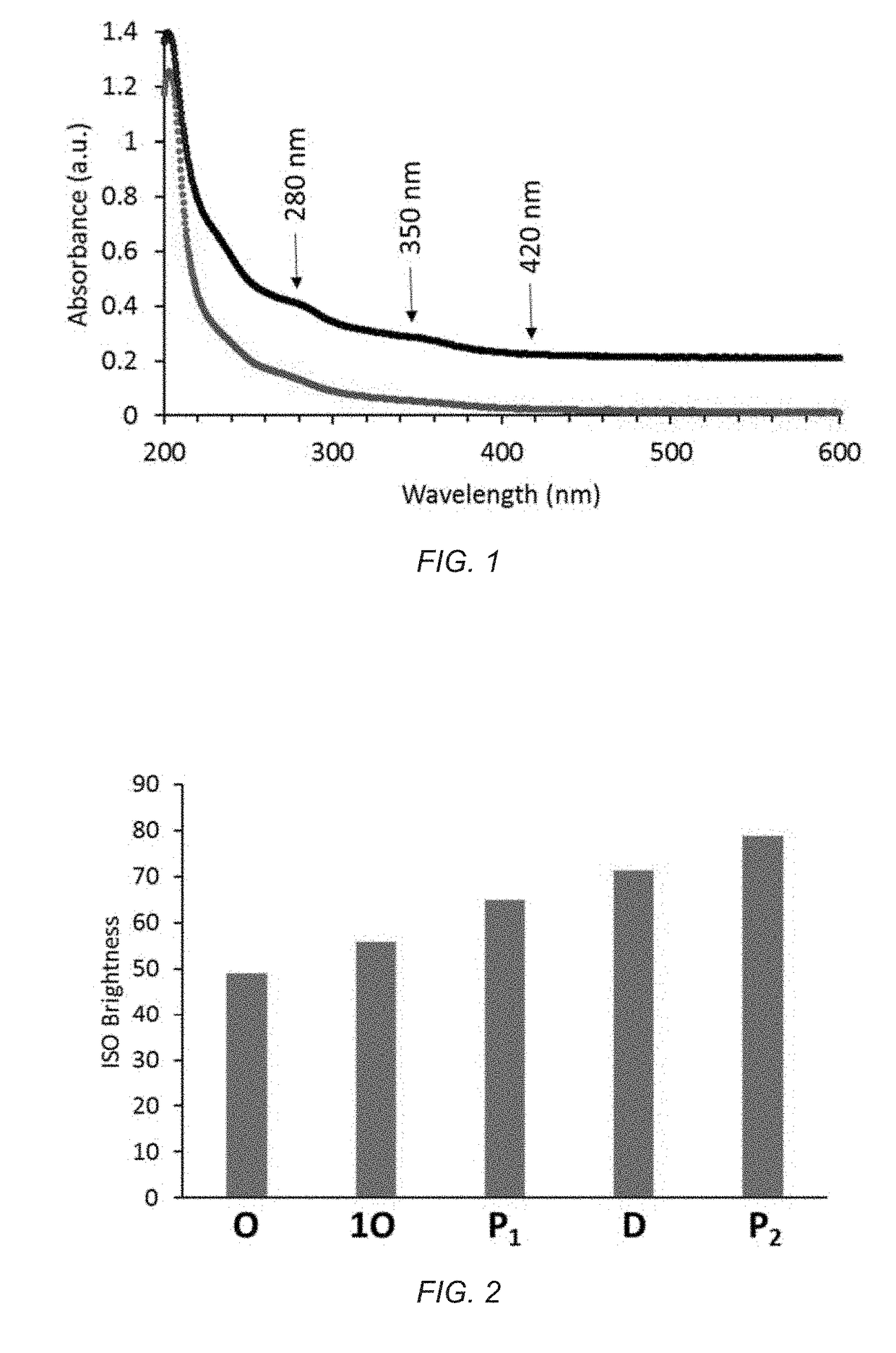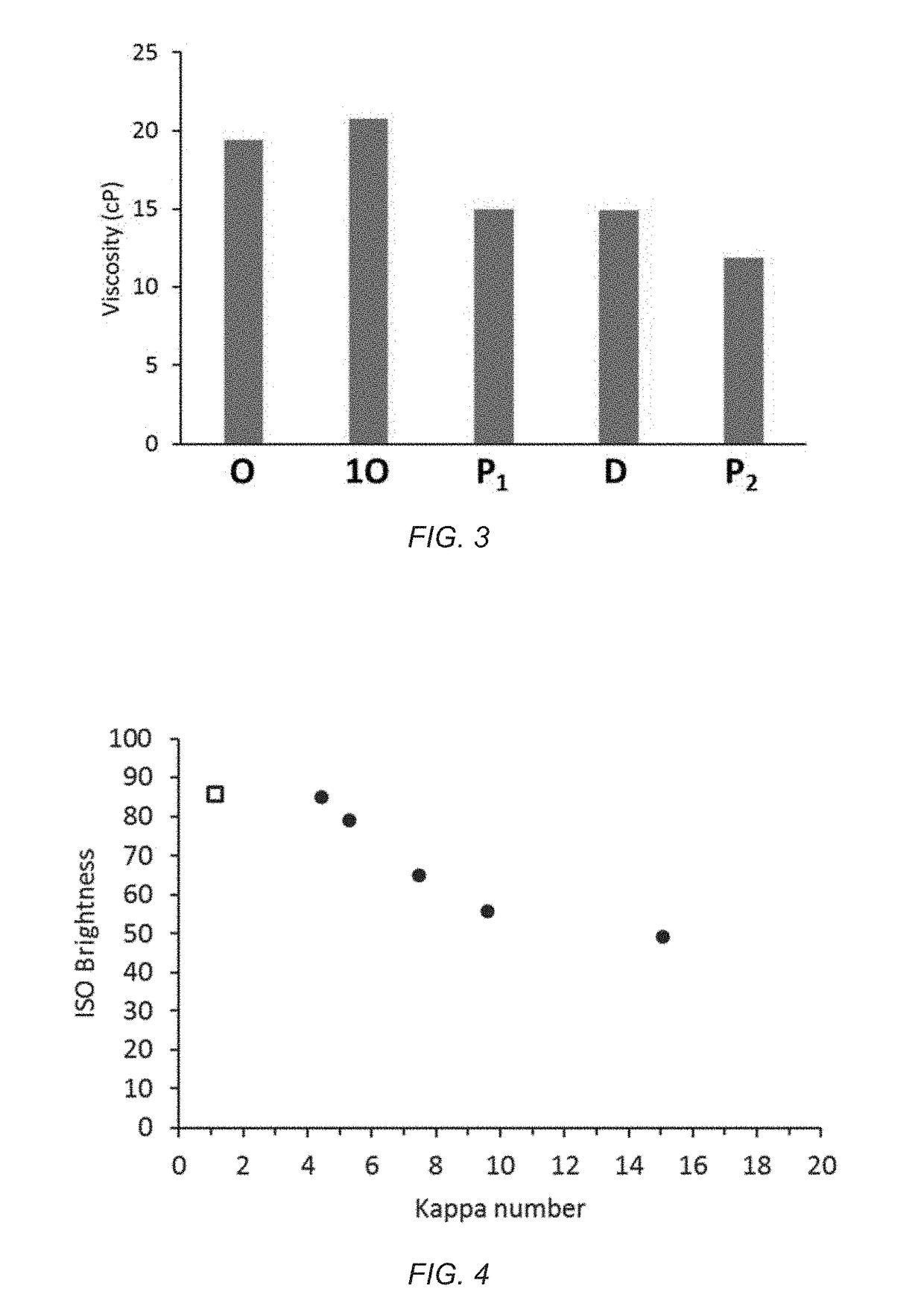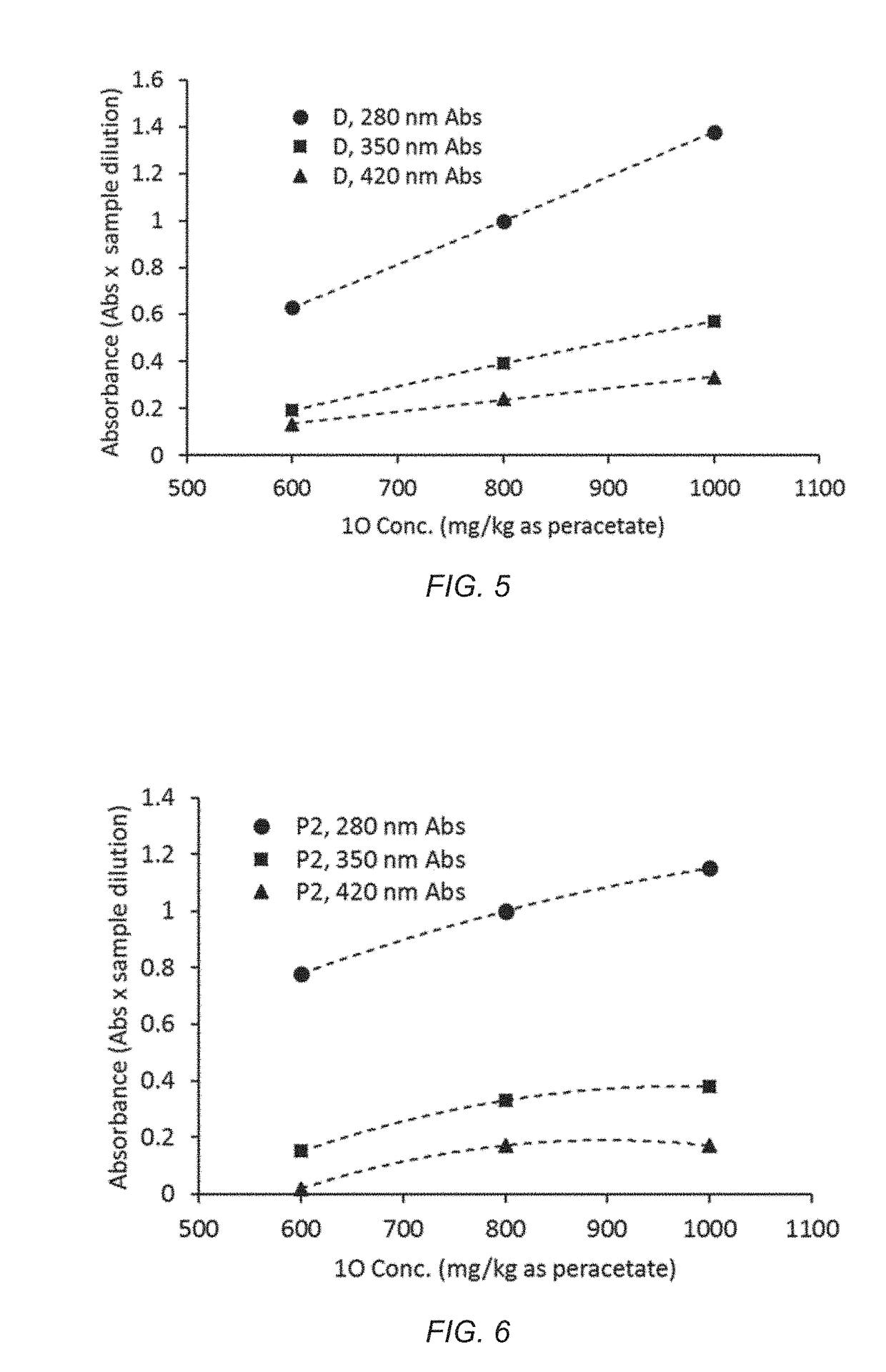Methods of pulp fiber treatment
a technology of pulp fiber and treatment method, which is applied in pulp by-product recovery, pulp liquor regeneration, papermaking, etc., can solve the problems of reducing fiber yield and fiber strength, damage to cellulose fiber, so as to increase pulp yield and preserve fiber strength
- Summary
- Abstract
- Description
- Claims
- Application Information
AI Technical Summary
Benefits of technology
Problems solved by technology
Method used
Image
Examples
embodiments
[0084]In some embodiments, the ROS formulation described herein, which generates singlet oxygen in significant quantities, has significant beneficial impacts on delignification, lignin extraction and bleaching of pulp. A singlet oxygen stage used at the beginning of a bleach sequence or used within a bleach sequence, when followed by an alkaline peroxide stage, significantly reduces the amount of chlorine dioxide (ClO2) needed to achieve brighter and white grades of pulp. Singlet oxygen delignification may be used to increase the efficiency of lignin extraction and brightening at subsequent bleaching stages, including stages that are two, three or more steps after a singlet oxygen stage. The increased lignin extraction and brightening efficiency enabled by using the ROS formulation in a ECF bleach sequence enables the use of up to about 97% less ClO2 to produce pulp brightness of about 60% ISO or greater. Elimination of ClO2 from a bleach sequence may be enabled by employing more th...
examples
[0136]Having now described the invention, the same will be more readily understood through reference to the following example(s), which are provided by way of illustration, and are not intended to be limiting of the present invention.
[0137]Test methods: Kappa numbers were measured in duplicate or triplicate using a micro-Kappa procedure that used 0.5 g of oven dried pulp fiber mass (¼-scale of the standard TAPPI T 236 om-99 method). Kappa number measurements were conducted on pulp samples stored damp after determining the percent solids of each sample.
[0138]The pH of pulp mixtures was measured with a high sodium pH electrode put directly into the pulp slurry. A thermocouple for temperature compensation of the pH reading was placed in the pulp during measurement.
[0139]Viscosity was measured by the following procedure. Pulp sample was disintegrated and diluted. The slurry was filtered through a filter paper in a Buchner funnel. The resulting pulp pad was dried at room temperature and ...
PUM
| Property | Measurement | Unit |
|---|---|---|
| Fraction | aaaaa | aaaaa |
| Fraction | aaaaa | aaaaa |
| Fraction | aaaaa | aaaaa |
Abstract
Description
Claims
Application Information
 Login to View More
Login to View More - R&D
- Intellectual Property
- Life Sciences
- Materials
- Tech Scout
- Unparalleled Data Quality
- Higher Quality Content
- 60% Fewer Hallucinations
Browse by: Latest US Patents, China's latest patents, Technical Efficacy Thesaurus, Application Domain, Technology Topic, Popular Technical Reports.
© 2025 PatSnap. All rights reserved.Legal|Privacy policy|Modern Slavery Act Transparency Statement|Sitemap|About US| Contact US: help@patsnap.com



